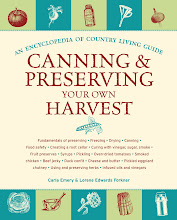As the leaves start to change color here in Seattle, the wind starts up and the temperature drops, I can’t help but think that fall is in the air. Just breathing in the cool air conjures up images of steaming hot cider, reading by the fireplace, and taking chilly walks through piles of collected leaves. Of course, one of my favorite aspects of this season is the food—pumpkin and acorn squash and cranberries and anything spiced with cinnamon!
Carla Emery shares my appreciation for fall’s bounty with the delightful crop of maize. It’s a bread, it’s a vegetable, it’s a decoration. The husks can be made into paper, rope, or stuffing. The cobs provide fuel to burn. The stalks and leaves are as good as hay for winter-feeding. The vegetable you might know as corn has a rich history of its own and provides one of my favorite fall snacks—popcorn!
An A-maize-ing History Lesson
The Latin name for corn is Zea mays. The word “Zea” is ancient Greek for “cereal” and comes from the verb “to live.” Similarly, the Native American word for corn was “maize,” which means, “that which sustains.” To Europeans, the word “corn” translates to the hard kernels of any common grain: wheat, oats, barley . . . or maize. That’s why the pioneers called maize “corn” — and why Europeans are still confused when we say “corn.”
Corn was first created by the genius of Native Americans thousands of years ago from an annual grass that had an extraordinarily high natural mutation rate. There’s nothing comparable to it among all the wild grasses; corn was created by farmers’ careful seed selections over the millennia (and is still being thus “created”). All the original corns, of course, were Native American. It was they who originally developed the flour, hominy, pod, popcorn, flint, and dent varieties, and all the colors and color combinations of corn.
POPCORN
Popcorn (Zea mays var. praecox or everta) is the only kind of corn that pops and turns inside out. It is considered by archaeologists to be the most ancient of the corns, popped and served for thousands of years. Popcorn is tougher than other corns (it has an extra hard outer covering called endosperm) and is difficult to work with unless you pop or grind it. When it has some moisture content (about 12 percent) and is heated, pressure builds up inside the tough outer covering that is preventing that water vapor from escaping until the whole thing explodes with a pop!
Popcorn takes longer to mature than most sweet corns. Harvest it as you would other field corns, first drying it in the field. Then hang it in the house like seed corn and dry another 3–4 weeks. The kernels of popcorn need to be hard on the outside in order to get the proper explosion of the remaining moisture at the center of the kernel when it’s heated. Popcorn is also the hardest of all corns to shell. To keep from hurting your hand, shell by rubbing one ear of corn against another or cover your hand with an old sock before you rub kernels away from the cob. Store popcorn in tightly lidded glass jars (so kernels don’t become too dry to pop).
Popping
Dutch ovens are good popcorn poppers. So is an iron frying pan with a lid or a commercial popper. Allow ½ cup dry corn for every 1 gallon popped corn that you want. Melt about 1 T. cooking oil in your Dutch oven or some other heavy pan with a tight-fitting lid. When the oil is hot enough to get broken lines across it and is just starting to smoke, it’s ready for the popcorn. Add the popcorn, cover, and cook over medium heat. Shake the pan on top of the heat constantly until you don’t hear much more popping; then immediately take it off the heat to prevent burning. To butter the popcorn, melt some butter in another small pan, pour it over the popcorn, and stir to mix. Sprinkle with salt if you like.
Classic popcorn is wonderful with just a little butter and salt, but Carla Emery has recipes for some great seasonal gourmet versions as well!
Cinnamon-Raisin Popcorn Mix -- Mix together 2 T. melted butter, 3 T. brown sugar, 1⁄2 t. ground cinnamon, 1⁄4 c. raisins, and about 1⁄4 c. apple chunks. Toss together with 8–10 c. freshly popped popcorn.
Cheese-Coated Popcorn -- Grate cheese to make 1⁄2 cup. Sprinkle cheese onto still-warm popped corn. Mix well. If you bake this for 15 minutes, it will dry out and be a bit crisper.
Honey-Nut Gourmet Popcorn -- Mix together 2 qt. freshly popped corn, 1 c. chopped peanuts, 1 c. raisins, and 1 c. sunflower seeds. Heat 1⁄2 c. honey and 1⁄2 c. water together in a pan, stirring, until you get to hard-ball stage. Add 1⁄2 c. butter and stir to melt. Pour the sweet mix over the dry mixture, stirring until the kernels are all coated. Spread it out on 2 greased cookie sheets. Bake 15 minutes at 350 degrees F.








No comments:
Post a Comment